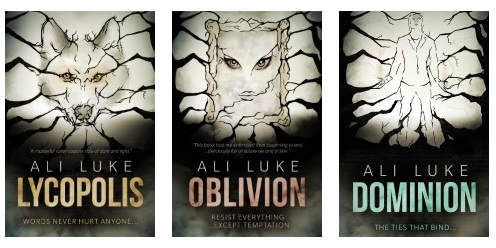What is Pacing in Fiction? (And Is Your Pace Too Fast, Too Slow, or Just Right?)

Your friend recommends a thriller to you and tells you it’s “a fantastic page-turner”. Another friend tells you about a sweet romance novel that’s a “gentle, slow burn”. Both your friends are describing something to do with the pace of the stories they’ve enjoyed.
What is Pace in Fiction?
Pace, or pacing, is the reader’s sense of how fast the story is moving. A fast-paced novel keeps us on the edge of our seats, feverishly turning the pages because we’re right there in the action and desperate to find out what happens next. A slow-paced novel can be just as absorbing: we relax into the story world and enjoy the gentle company of the characters, perhaps appreciating the beauty of the writing, too.
Pace isn’t about the timeframe in which a novel takes place. A novel could take place in a single day and still be slow-paced (James Joyce’s Ulysses is a good example). Alternatively, a novel could take place across months or even years, and the pace could still be fast and relentless.
Having a short timeframe can potentially help the author increase the pace of the story, especially if characters are racing to achieve something before a deadline, but it’s definitely not a requirement.
Why Pacing is Such a Challenge for Writers – Especially During the First Draft
When you’re writing a first draft, your sense of how fast the story is moving is inevitably distorted. You’re not writing at the same speed someone would read, after all!
As you put together your story, writing for maybe an hour here, 15 minutes there, and perhaps not writing scenes in order, it may feel to you like a particular scene is dragging on and on. And from your perspective, it probably is! Maybe you started on the scene four weeks ago, and you’ve been working on it sporadically, so to you, it’s taken almost a month.
From a reader’s perspective, that scene might take just 10 minutes to read. Instead of feeling drawn out, it could even feel rushed.
Conversely, you might have written three scenes, months apart, that cover rather similar ground. To you, those scenes might feel fresh and distinct (perhaps you barely remembered writing the first of them as you worked on the third). But to the reader, those scenes may seem to bog down the pace of the story.
The good news is, you definitely don’t need to get the pacing of your novel right during the first draft. In fact, I’d recommend you don’t even try! It’ll be hard to get a good sense of the pace until you have a complete draft – so focus on getting to that point first, then think about pacing.
How to Figure Out if Your Story’s Pacing is Too Fast, Too Slow, or Just Right
Let’s say you’ve got a completed draft. (Congratulations!) Now, you’re wondering how you can tell if your pacing is too fast, too slow, or spot-on. Here’s what you can do:
- First, be aware of your genre. What will your readers expect when it comes to pacing? If you’re writing thrillers or action-adventure novels, it’s a safe bet that readers want a fast pace. If you’re writing mainstream romance novels, then readers will likely want a slow, gentle pace that helps the book feel like a cosy and relaxing read.
- Then, read through your whole novel – like a reader would. Note down parts where the pacing feels off. Perhaps the start of your novel feels much too slow, or there’s a crucial scene in the middle that feels rushed. Maybe the pay-off at the climax doesn’t feel quite as powerful as you’d intended, because it’s so fast-paced, there’s no room for it to have an emotional impact.
- If possible, get a beta reader or editor involved to help you. They’ll be coming to your novel fresh, so it’ll be easier for them to spot places where the narrative rushes forward too fast – or where the story feels slow and bogged down. You’ll probably want to fix any obvious pacing issues before sending it to them: in a few weeks, I’ll be tackling the issue of how many drafts to do before sending your work to a beta reader.
Signs Your Pacing Might Be Too Fast
Worried you’ve zoomed through your story (or bits of it) too fast? Here are some signs that you may need to slow down the pace:
Scenes feel rushed or underdeveloped. I think this is the most obvious sign of pacing issues, and it’s usually apparent when you re-read the first draft. If your characters seem to resolve a problem super-fast, or a critical conversation takes just a handful of lines of dialogue, or there’s not much tension in the scene, then it might need slowing down a little.
Character development feels forced. On a big-picture level, the pacing of your whole novel might be a little too fast if characters seem to have big revelations or go through dramatic changes without really having the depth of experiences to support this development.
Important moments are over and done with too quickly. There are plenty of times in your novel where it makes sense to move the action on fast. But sometimes, you want to slow down and linger on a really important moment. Perhaps it’s the revelation of a secret from the character’s past, or a really emotional scene, or a dramatic reversal in the plot. You don’t want it to feel to the reader like it’s all fizzled out after just a few paragraphs.
Signs Your Pacing Might Be Too Slow
Feel like your story is dragging on … and on … and on? Here are some signs you may need to speed up the pace:
Scenes seem to drag – even as the author, you’re losing interest! Perhaps that lovely scene of your characters enjoying tea and scones together in the rose garden felt like a joy to write … but now you re-read it, it’s clear that nothing is really happening, for pages on end. It’s easy to spin your wheels a bit when drafting (especially in the early chapters of your story) – and you may need to cut scenes down, or even cut them out altogether, to improve the pace.
You’re spending a lot of time on descriptions that doesn’t impact the story. I’ll admit to a degree of bias here: writing descriptions isn’t a strength of mine, and it’s also not something I’m all that interested in as a reader! But if you’ve got lots of descriptive details that don’t have any bearing on the story, that’s going to really slow down the pace. (Relevant description is another matter.)
There’s too much “real life” detail. While the pace of daily life may feel hectic, a lot of our lives would seem slow and boring set down on paper. It’s unlikely your novel needs the blow-by-blow of a character waking up in the morning, taking a bath, or eating a meal, or doing their taxes. Unless something happens that impacts the plot, assume that the reader will be well aware that your characters sleep, wash, eat, and carry out life admin tasks – you don’t need to set it down on the page.
Signs You’re Getting it Right
How will your story feel if the pacing is spot-on?
As you re-read your work, you’ll notice that the pacing varies. In general, there’ll be a sense of things speeding up as the novel progresses towards the climax – particularly from the midpoint onwards. But that doesn’t necessarily mean a relentless pace. Instead, you’ll probably have some faster-paced scenes and some slower, more reflective ones (though not so slow that they drag).
In the fast-paced parts, including the climax, your novel may be speeding forward – but the writing itself shouldn’t feel rushed. There should be enough space for important moments to have their true impact.
If you’re struggling to be certain whether the pacing is quite right, then you can also look at how readers are responding. You could share some or all of the novel with a writing group, with beta readers, or an editor, before publishing it. Hopefully, they’ll respond well to the pace – but if there are any issues, they’ll likely be able to point to the areas where you need to tweak the pacing.
In general, I think it’s best not to worry about pace while you’re in the planning or drafting stages or writing. It’s really hard to get the pace right while you’re putting together the story.
Once you have a complete first draft, it’ll be a lot easier to see how the pace works overall. You’ll be able to spot areas where you need to cut material and speed up the action … and areas where you need to linger a little longer over a crucial character development moment or plot point, to give it greater impact.
About

I’m Ali Luke, and I live in Leeds in the UK with my husband and two children.
Aliventures is where I help you master the art, craft and business of writing.
Start Here
If you're new, welcome! These posts are good ones to start with:
Can You Call Yourself a “Writer” if You’re Not Currently Writing?
The Three Stages of Editing (and Nine Handy Do-it-Yourself Tips)
My Novels

My contemporary fantasy trilogy is available from Amazon. The books follow on from one another, so read Lycopolis first.
You can buy them all from Amazon, or read them FREE in Kindle Unlimited.


0 Comments